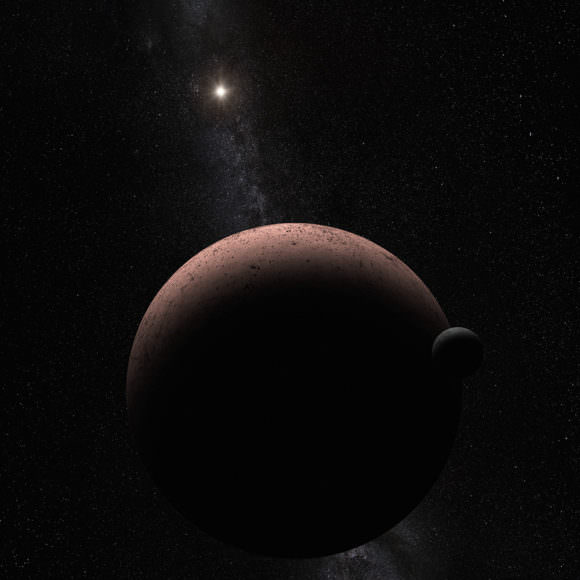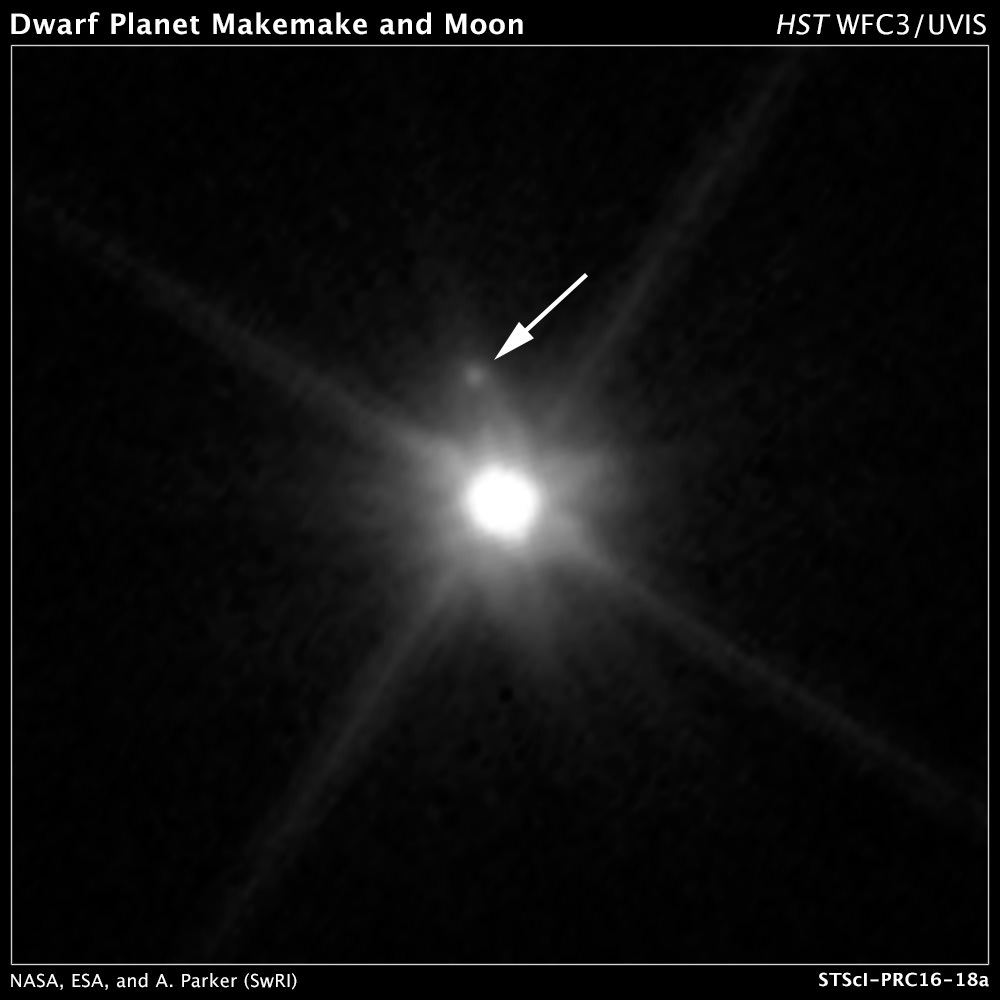Planetary scientists using the Hubble Space Telescope have spotted a dark mini-moon orbiting the distant dwarf planet Makemake. The moon, nicknamed MK 2, is roughly 160 km (100 miles) wide and orbits about 20,000 km (13,000 miles) from Makemake. Makemake is 1,300 times brighter than its moon and is also much larger, at 1,400 km (870 miles) across, about 2/3rd the size of Pluto.
“Our discovery of the Makemakean moon means that every formally-designated Kuiper Belt dwarf planet has at least one moon!” said Alex Parker on Twitter. Parker, along with Mark Buie, both from the Southwest Research Institute, led the same team that found the small moons of Pluto in 2005, 2011, and 2012, and they used the same Hubble technique to find MK 2. NASA says Hubble’s Wide Field Camera 3 has the unique ability to see faint objects near bright ones, and together with its sharp resolution, allowed the scientists to pull the moon out from bright Makemake’s glare.

Previous searches for moons around Makemake came up empty, but Parker said their analysis shows the moon has a very dark surface and it is also in a nearly edge-on orbit, which made it very hard to find.
This moon might be able to provide more details about Makemake, such as its mass and density. For example, when Pluto’s moon Charon was discovered in 1978, astronomers were able to measure Charon’s orbit and then calculate the mass of Pluto, which showed Pluto’s mass was hundreds of times smaller than originally estimated.
“Makemake is in the class of rare Pluto-like objects, so finding a companion is important,” Parker said. “The discovery of this moon has given us an opportunity to study Makemake in far greater detail than we ever would have been able to without the companion.”
Parker also said the discovery of a moon for Makemake might solve a long-standing mystery about the dwarf planet. Thermal observations of Makemake by the Spitzer and Herschel space observatories seemed to show the bright world had some darker, warmer material on its surface, but other observations couldn’t confirm this.
Parker said perhaps the dark material isn’t on Makemake’s surface, but instead is in orbit. “I modeled the emission we expect from Makemake’s moon, and if the moon is very dark, it accounts for most previous thermal measurements,” he said on Twitter.
The researchers will need more Hubble observations to make accurate measurements to determine if the moon’s orbit is elliptical or circular, and this could help determine its origin. A tight circular orbit means that MK 2 probably formed from a collision between Makemake and another Kuiper Belt Object. If the moon is in a wide, elongated orbit, it is more likely to be a captured object from the Kuiper Belt. Many KBOs are covered with very dark material, so that might explain the dark surface of MK 2.


Welcome to the family MK2 🙂
One thing this makes me wonder about is that since KBOs with satellites that are fairly large in relation to main body are not uncommon, do we we really need a Mars-sized object colliding with the Earth to explain our large moon? Apply Occam’s Razor. I think the answer is no.
there is no consensus that it was a satellite. it could have been a collision between two non-orbital bodies for example…
excuse my multiple posts. I was getting an error message and thought that they were not going through. I should have known… lol
excuse my multiple posts. I was getting an error message and thought that they were not going through. I should have known… lol